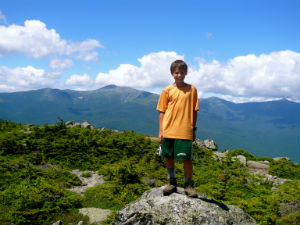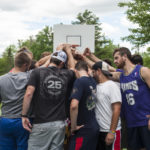Tips For Running A Successful Beginner’s Hiking Trip
Leading a hiking trip for a group of young campers or first time hikers takes a unique approach, but it is important work that can direct a young person toward a lifetime love of the outdoors. It is extremely rewarding to witness the “aha moment” that often comes on one of these adventures. Likewise, a negative experience can be a deterrent, so take this responsibility seriously.
Gear Up And Get Ready:
1. It is important to know your group and their capabilities. A hike should be challenging enough that the participants feel a genuine sense of accomplishment upon its completion, but not so challenging as to ‘overface’ anyone. Therefore, as the trip leader/planner, you need to be knowledgeable about the trail or route on which you are planning to take your group. Especially with beginners or young hikers, it is important to have taken the trip beforehand so as to be able to predict difficult sections and plan accordingly.
2. If possible, choose a trip that involves hiking a mountain that has a summit with a view. There are countless times that I have coached a struggling beginner up a hill, only to have his or her face completely light up upon reaching the summit and registering beautiful view. A summit is a great communal place to celebrate everyone in the group’s effort, to bond, and to take a well-deserved break. For a young person, it’s a very tangible lesson that with enough hard work you can reach your goals. Children are goal oriented and the feeling of conquering a peak is something they can easily latch on to and look forward to doing again.
3. It cannot be over-emphasized how important attitude is when calculating the success of the overall experience. If you can convince the members of your group that no matter how hard the trip is or how much the weather misbehaves, they are going to maintain a good attitude, you are guaranteed to have a successful outcome.
Endeavor to have the trip be comprised of “volunteers”. This may be difficult if leading a school group or a camp bunk, where such a trip is a mandatory part of the curriculum. In these circumstances, do some pre-work to make sure that everyone is both prepared and enthusiastic about the trip. In my experience, those hiking by choice have an enormous record of success as judged by the expressed satisfaction of the participants.
4. Make sure you are prepared! Obviously, you should have the appropriate permits and certifications in wilderness first aid or other similar programs. Even if the trip you are about to lead is mere child’s play compared to the treks you would take on your own, you still need to plan for the worst case scenario. Don’t scrimp on gear, water, warm/waterproof clothing, first aid supplies, medications, etc. just because the trip is something less challenging than you are used to.
5. Before departure, check the packs of those in your group (young kids are notoriously disorganized and forgetful), but bring extra supplies nonetheless. Examples: extra warm layer, water bottle etc.
6. Essential to establishing the proper attitude for the trip, have a group meeting at the trail-head immediately prior to the commencement of hiking. I use language like, “The number one rule on this hike is ‘no whining’”. This usually draws some puzzled looks. “That’s right,” I continue, “whining is contagious and it can spread quickly and ruin the trip for everyone. There is a huge difference between whining (being negative) and reporting legitimate problems, like a blister on your toe or a bee sting. If you get hurt or feel a blister coming on, I am trained in wilderness first aid. I have a first aid kit and I’ll be in the back of the group. We’re going to keep it positive and have a great time. Everyone understand and agree?” Everyone nods his or her head in agreement. Rarely, if ever had I had someone break this pact.
7. Explain the terms “lead” and “sweep”: the lead is the person (preferably an adult) who is in the front. Nobody gets ahead of the lead. It is imperative that the lead stops the group at every trail crossing or potentially confusing part of the trail and waits until the sweep arrives. The lead is also responsible for setting the proper pace for the group and for picking appropriate times and places to take breaks. It can be discouraging to slower hikers in the back of the line to always feel as if they are terribly behind, while it can be frustrating to those in the front to feel like they are doing more waiting than hiking. In general, if hiking uphill it is a good idea for the lead to stop about every 15 to allow for the group to reunite. The sweep is the person (usually an adult trained in wilderness first aid or another equivalent certification) behind whom no hiker falls. The sweep carries the first aid kit and responsible for coaching slower beginner hikers up the trail.
In It To Win It
8. Lastly, review the principle of hiking etiquette and “leave no trace” practices. Remind the group to be courteous, share the trail with others, to keep their eyes open and their voices down, to stay only on the marked portions of trails, and to be responsible for their own trash.
If you follow these general principles and keep an enthusiastic and positive attitude yourself, you are bound to run a successful hiking trip!





Love your tips. It’s true to follow best hiking tips to running successful beginners hiking trip. Hiking trip to the big challenge to perfect adventure for beginners. Those tips are really helpful and essential who go hiking trip the first time. You run a successful hiking trip to keep an enthusiastic and confident attitude yourself.Thanks for your great hiking tips for beginners.